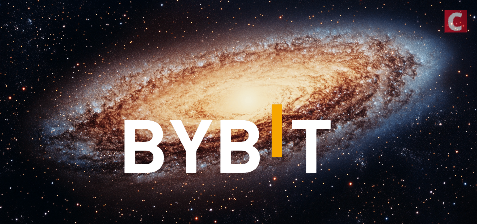In 2024, Web3 is pushing the boundaries of decentralization, giving users digital sovereignty, privacy, and financial freedom. But as with any new tech, the journey to mainstream adoption is littered with obstacles. One of the biggest is wallet interactions, which is a critical part of the decentralized web. The average user has to deal with private keys, seed phrases, and multiple interfaces, which for many is a barrier too high to overcome.
The key to solving these issues lies in simplifying wallet interactions, particularly around wallet management, and this can be done by integrating artificial intelligence (AI) and natural language interfaces. These two innovations can make Web3 more intuitive, accessible, and ready for mass adoption.
The Complexity of Wallet Interactions: A Barrier to Mass Adoption
Wallets are the entry points to decentralized applications (dApps) and financial services in the Web3 space, but their complexity has scared off many potential users. Blockchain transactions can be intimidating, users have to manage private keys, gas fees, and often opaque interface designs. Current wallets require not just technical knowledge but also the constant risk of human error, losing a seed phrase, for example, can mean irreversible loss of assets. According to recent research, 20% of all Bitcoin is considered “lost”, often due to forgotten keys or inaccessible wallets, all these are calling for improvement.
For Web3 to be truly global, the process of interacting with on-chain applications needs to evolve. Just like how email made online communication accessible to everyone, Web3 wallet interactions need to mirror traditional web experiences.
Projects like Spectral Labs are simplifying wallet management and making blockchain accessible to non-tech users. By using AI and intuitive design, they are removing the barriers obstructing mass adoption. Another project on this path is Argent, they are also tackling this problem by providing smart wallet solutions that get rid of private keys and complex seed phrases so users can interact with DeFi and other Web3 apps. With more projects coming to the market to offer solutions, Web3 wallet management is on the path toward usability and mass scaling.
The Promise of AI-Assisted Interfaces in Web3
One of the most promising solutions to simplify Web3 interactions is to integrate artificial intelligence (AI) into on-chain interfaces. AI-assisted tools can remove much of the friction users face by automating tasks such as transaction management, gas fees, and even multi-signature accounts. By removing the need for deep technical knowledge, AI interfaces can bridge the gap between Web3 and non-technical users and make the decentralized web accessible to everyone.
For example, AI-powered agent wallets could be personal assistants, guiding users through transactions, securing assets, and managing wallets without human error. They could also help users manage DeFi portfolios by executing trades or adjusting assets based on real-time market data. According to a report last year, AI-driven systems will automate over 50% of all blockchain tasks by 2025 and make blockchain technology more accessible to the average person.
AI-assisted interfaces go beyond just wallet management. In decentralized governance, AI could help users vote by analyzing proposals and making decisions based on their preferences. DAOs are already testing AI to make governance and decision-making easier for non-technical users. For example, Olas, a decentralized autonomous organization (DAO), is actively adding AI to its operations to make it easier for users to interact with on-chain assets and governance systems. Gitcoin, another DAO, is using AI and machine learning to streamline grant funding decisions and optimize collaboration among its members.
The long-term vision is to have an ecosystem where users interact with Web3 applications as naturally as they do with traditional apps, using natural language processing (NLP) and voice commands to buy NFTs, stake assets, or interact with smart contracts.
Natural Language Interfaces: Web3 UX
In the future, the next big leap in Web3 user experience will come from natural language interactions. Just like how voice assistants like Siri and Alexa have made technology more accessible, we will have conversational agents that allow us to interact with decentralized applications in everyday language. Imagine telling your agent wallet, “Stake 2 ETH in liquidity pool X” or “Send 0.5 ETH to my friend’s wallet”, and those actions are being done instantly without having to navigate menus or input seed phrases.
In this scenario, Web3 is as intuitive as making a phone call. The backend complexity of blockchain is hidden and the user has a seamless experience. By 2026 up to 75% of Web3 applications will have natural language processing and that will change how users interact with decentralized systems.
These are not just about convenience they are necessary to have decentralized applications adopted. In a world where users are demanding simplicity, Web3 must follow suit so we can realize the potential of reshaping industries. By reducing friction and making blockchain accessible through natural language interfaces, we can unleash the power of decentralized technology for everyone.
2024 is still early days for Web3, but the direction is clear. If decentralized systems are to go mainstream, the complexity of wallet interactions must be solved through innovation. AI-assisted interfaces and natural language interactions are the next step in simplifying Web3 so non-technical users can participate in the decentralized economy with ease.
The future of Web3 is bright and with the right tools and advancements, it will be as easy to use as any other digital ecosystem. By combining AI and intuitive design we can break down the barriers that have held back mass adoption transform the user experience and unlock the full potential of blockchain.
Disclaimer: Coinspeaker is committed to providing unbiased and transparent reporting. This article aims to deliver accurate and timely information but should not be taken as financial or investment advice. Since market conditions can change rapidly, we encourage you to verify information on your own and consult with a professional before making any decisions based on this content.

Sishir Varghese is CEO and Co-Founder of Spectral Labs. Spectral, a pioneer of the agent economy, is at the forefront of integrating AI with blockchain to democratize development in Web3. With over 100,000 users onboarded and 2 million smart contracts created, Spectral is already transforming how individuals interact with blockchain technology. Sishir's thought leadership articles have been featured on Bitcoin Insider and Coin Check Up.





